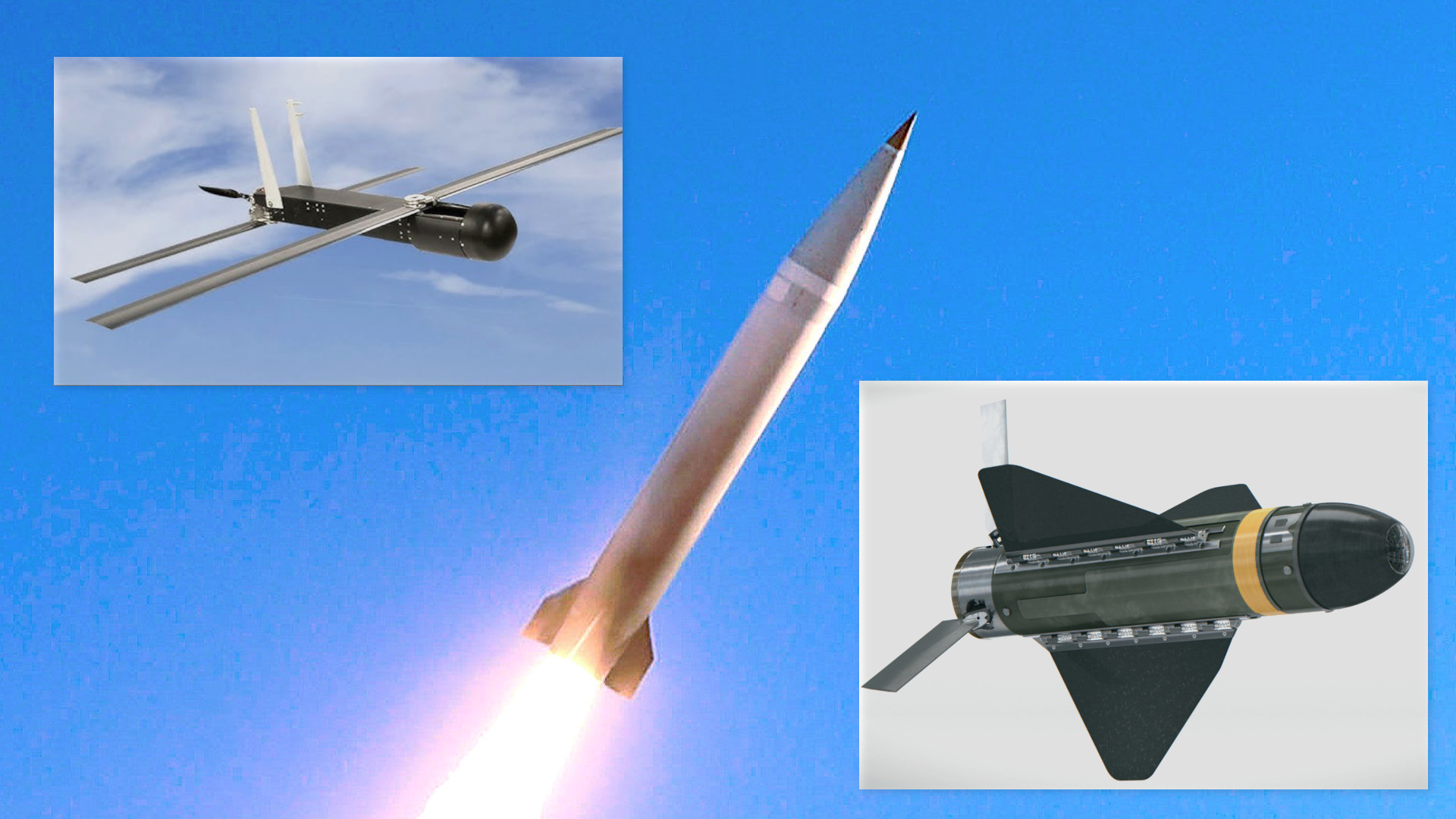Future versions of the Precision Strike Missile (PrSM) short-range ballistic missile for the U.S. Army could carry Coyote drones or Hatchet miniature glide bombs, according to Lockheed Martin. The Army has previously talked about potentially loading PrSMs with swarming munitions and other “enhanced” payloads, but without providing more specific details.
Becky Withrow, director of strategy and business development at Lockheed Martin, talked about future payload and other aspects of the PrSM program with TWZ‘s Howard Altman on the floor of the annual Modern Day Marine exposition yesterday. The Army is currently in the process of fielding PrSM, but versions of the missile could also be of interest to the Marine Corps.

The Army has so far outlined plans for four incremental PrSM developments on top of the baseline Increment 1 missiles. Increment 2 is centered on the development of a new dual seeker system that enables the engagement of moving targets on land or at sea. Increment 4 is about increasing PrSM’s range from just under 310 miles (500 kilometers) to 620 miles (1,000 kilometers), and Increment 5 aims to extend that reach even further. Increment 3, which the Army now envisions as coming after Increment 4, is about “enhanced lethality.”
For Increment 3, the Army “will put a different warhead in there,” Lockheed Martin’s Withrow explained. “They have yet to decide. It’s still in the S&T [science and technology] community. So they’re looking at various warhead options.”
“I know they’ve looked at things like Coyote, they’ve looked at Hatchet, things like that,” Withrow added, stressing that she was not aware of any final decision having been made.
Withrow did not specify what version of Coyote might go into a future Increment 3 PrSM. Manufacturer Raytheon has publicly shown three members of the Coyote family to date: the original electric motor-driven pusher propeller design with its pop-out wings and tails (now known as Block 1), the jet-powered Block 2 counter-drone interceptor, and the Coyote LE SR (Launched Effect, Short-Range), another jet-powered type previously known as Block 3. Block 1 and 3 Coyotes are modular in design and can be configured in multiple ways, including as loitering munitions, as well as to perform reconnaissance and surveillance, electronic warfare, and other missions.



The Army has previously released a graphic, seen below, depicting a PrSM releasing drones with some broad visual similarities to the Coyote Block 1. Earlier this year, Raytheon announced successful tests of Coyote LE SRs from a Bell 407 helicopter and a Bradley Fighting Vehicle – the latter of which TWZ was first to report on – and has described that version as being designed to be “platform and payload-agnostic.”

Hatchet is a roughly six-pound precision glide bomb that can be fitted with a dual-mode GPS-assisted inertial navigation system (INS) and semi-active laser guidance package. Laser guidance allows for the engagement of moving targets as long as they can be lazed either by the launching platform or another offboard source. Manufacturer Northrop Grumman has said that other terminal guidance options, including electro-optical/infrared seekers with automated target recognition capability, could also be in Hatchet’s future.
Northrop Grumman also claims that the advanced design of Hatchet’s three-pound warhead makes it 50 to 80 percent as lethal as a 500-pound-class bomb, depending on the target type. Point-detonating, delayed, and air-bursting fuze options are available.

A single PrSM carrying a load of small precision munitions like Hatchet would give the Army the ability to strike multiple targets by launching just one missile. If the missile could release its submunitions at multiple points along its flight trajectory, it would expand the total area in which targets could be prosecuted. A group of GPS/INS-guided munitions like Hatchet could be pre-programmed to hit specific points over a wide area, but at a set distance apart in a grid, offering coverage akin to that a cluster munitions.
The functional range of any version of PrSM could be extended by loading it with powered submunitions like Coyote, which could then fly further on their target areas after release. Swarms of loitering munitions could also use their endurance hunt targets autonomously after being launched into areas where enemy forces are broadly known to exist, but their exact positions are unknown. An Increment 3 PrSM might be used to rapidly ‘seed’ parts of the battlefield with loitering munitions as an area denial tactic, as well. A swarm could include drones configured for other missions, including electronic warfare and reconnaissance.
Increment 3 PrSMs carrying various types of precision munitions could be particularly useful in suppressing or destroying enemy air defenses, especially mobile systems that might otherwise be hard to find and fix. The idea of using ground-based artillery and other indirect fire capabilities as tools to help clear paths for friendly aircraft is hardly new to the Army. The service has also put forward the idea of using high-altitude balloons to deploy swarms of loitering munitions deep inside enemy-controlled territory.
Overall, an Increment 3 would offer a highly survivable delivery system for deploying swarming payloads deep into contested or denied areas. Multiple wargames, including ones conducted under the auspices of the U.S. military, have offered significant evidence that swarms of relatively cheap networked drones with high degrees of autonomy, including ones configured as loitering munitions, could have game-changing impacts in future high-end conflicts.
With all this in mind, it is also interesting to note that China’s Guangdong Aerodynamic Research Academy (GARA) unveiled a concept for an unpowered hypersonic boost-glide weapon loaded with different types of submunitions, including supersonic missiles and drones, at last year’s Zhuhai Airshow. You can read more about the GDF-600 here.
At the same time, it is important to note that launching submunitions from a ballistic missile that could be traveling at high supersonic, if not hypersonic speeds (defined as anything above Mach 5), presents challenges. This is primarily due to physical and thermal stresses, especially at the time of separation. More fragile payloads designed to travel at subsonic speeds, like drones, would also require some means of safely slowing down after their initial release. Maneuvers that bleed off energy prior to release could help mitigate these issues, as well. This all may help explain why PrSM’s Increment 3 now comes after Increment 4.

Regardless, the Army is clearly still interested in the additional capabilities that a PrSM loaded with precision munitions or drones could offer, and we now know the service has been looking at Coyote and Hatchet specifically as potential options.
Contact the author: joe@twz.com
